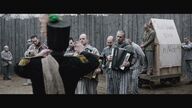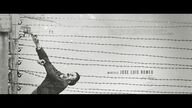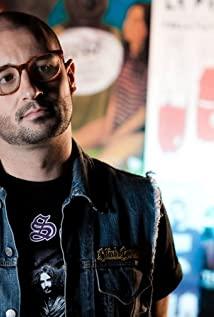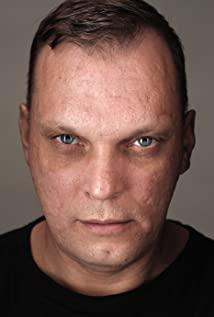No one will forget the existence of the "World War II", and each of the 70 million souls who died in this catastrophe is worthy of future generations to remember forever.
However, in the remote Mauthausen concentration camp in Austria, five Chinese were detained here. If it were not for the bravery of a Spanish photographer, I am afraid that their last trace in the world would never be known to the world.
A Spanish photographer named Francisco Boix (hereinafter referred to as Boix) was imprisoned in the Mauthausen Concentration Camp during World War II. Because of his extraordinary photographic talent, he was selected by the Nazi officers to become a photographer in the concentration camp, taking pictures and recordings of German officers and prisoners, and was deeply trusted by the German army.
In the latter part of World War II, when the German army was losing ground on the battlefield, Mauthausen concentration camp would also face abandonment. Before leaving, the German army ordered the burning of all documents and photo materials in an attempt to destroy the brutal crime. In the face of close monitoring by the Germans, Boix wit and bravely preserved a large number of photo negatives, and made public all the crimes committed by the Germans at Mauthausen, so that the blood-spattered life here could rest in peace.
In Mauthausen concentration camp during World War II, a total of 199,404 prisoners were imprisoned. Among them, about 119,000 people died from harsh environments, exhaustion, malnutrition and overwork, including 38,120 Jews and at least 5 Chinese.
Tang A Ting, male, was born in Guangdong on May 3, 1908;
Xia Jinkai, gender unknown, was born in Zhejiang on October 26, 1902;
Wang Nanping, whose gender is unknown, was born in China on August 10, 1909;
Amingjie, gender unknown, was born in China on May 9, 1910;
George Tan, male, was born in Berlin on January 3, 1903.
Of these five Chinese, two died in concentration camps. The column for the cause of death reads "poor blood circulation, acute colitis." This is a common cause of death in the archives of concentration camps, but the actual situation is often not the case. Another survivor died five days after being liberated from the concentration camp.
After World War II, Mauthausen concentration camp was converted into a memorial. After discovering that there were Chinese among the victims, the Chinese government decided to erect a monument for the victims in this concentration camp in the name of the Chinese Embassy in Austria. On May 11, 2003, the Mauthausen Concentration Camp held the unveiling ceremony of the Memorial to the Victims of Chinese Compatriots. The dark marble monument is engraved with: "Remembrance of the Chinese compatriots who died in this concentration camp".
Let's go back to the movie "The Photographer in the Concentration Camp". The film also won 4 nominations at the 33rd Spanish Goya Awards, although none of them were escorted.
The Spanish actor Mario Casas who plays Boix in the film.
I believe many fans must be familiar with this name. In 2016, "The Invisible Guest" starring him, with super strong text and roller coaster reversal plot, captured a lot of praise from Chinese movie fans.
In the movie, each prisoner in custody is divided into different classes and power levels through the triangle mark on the prison uniform. The first wave of detained prisoners was mainly composed of criminals, murderers and other extrajudicial persons. They are transformed into loyal dogs of the German army, using the sticks in their hands to declare to others that they have the right to tyranny.
The protagonist Boix has a blue S on his chest, symbolizing the stateless people who lost their country, freedom and dignity in the war. These talents are the "core force" of the entire concentration camp, the masters of hard work, and the threat of death every day.
The more unique class symbols are explained at the beginning of the film, expressing the brutality of the concentration camp's strict hierarchy through the interdependence and exploitation of these three classes.
The movie's story background is set in winter. Withered woods, harsh winters, heavy snow and icy walls, under the treatment of cold tones, look so bleak.
When the prisoners gathered in the barracks at night to lean on each other, the overall film turned to a warmer tone. The alternating light and dark tones are extremely common in this film. On the one hand, it clarifies the difficult environment of the protagonist and others, and also expresses the contrast between the cold and warm hearts of the characters. Although this technique is very common, it is one of the rare highlights in this film.
However, the plot of the film is more problematic. Obviously, it can be seen that the screenwriter uses many short stories guessed or actually happened after each real photo material to connect a whole plot of cause and effect.
Such an operation makes the film itself ignore the coherence of the overall text. As a result, the overall rhythm problem is relatively large, and due to the need to make concessions for the series of photos, the expression of several main characters is insufficient and even lacks logic.
Boix saves the photo negatives from the German army, which is the main story line of the film. However, the film is too simple and rough in explaining the specific implementation process and methods, and there has not been too tense crisis in the process. This also led to the central part of the film. Apart from showing some small-scale cases of German brutality, the audience's tension on the main plot is almost non-existent.
In the second half of the film, Boix thought his behavior was about to be revealed, so he took the initiative to provoke the German army. Then the male protagonist opened up the protagonist's aura, beating the German military officer not only not being rectified on the spot, but being locked in a gas car, but also able to get out easily and smoothly, very smoothly.
Originally, the audience was looking forward to watching the movie, thinking that there would be a pinpoint or a thrilling escape at the end, but there was no result, just like the end of a mediocre story, the kind of ending that is easy to guess from the beginning. After reading it, I felt relieved.
However, in the last part of the film, the prototype character of Boix appeared in court to be identified in a military court, and some original photos that echoed the plot of the film were released. This section is still very touching. But after watching the prototype and then thinking about the movie itself, there is a feeling that I could do it well, but I didn't do it well.
All in all, the overall performance of the movie "The Photographer in the Concentration Camp" is fairly satisfactory. Although in the coherence and logic of the story, it seems a little insufficient. However, there are still merits in the establishment of symbols and the use of film tones. Those who like World War II movies or movies adapted from real historical events are still worth watching.
View more about The Photographer of Mauthausen reviews











